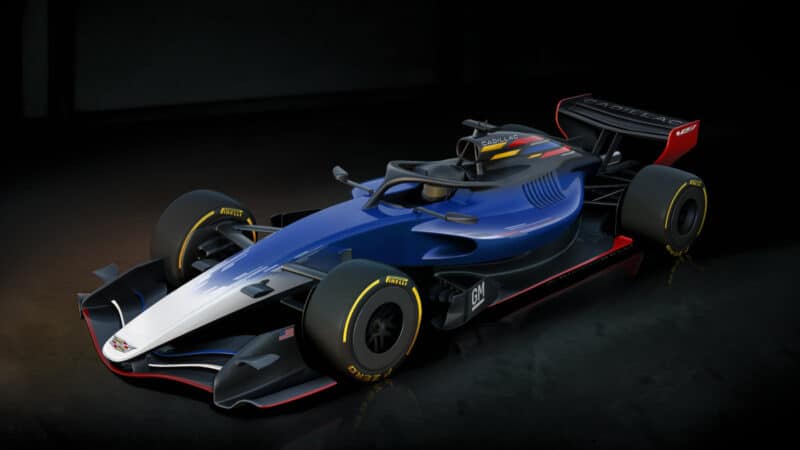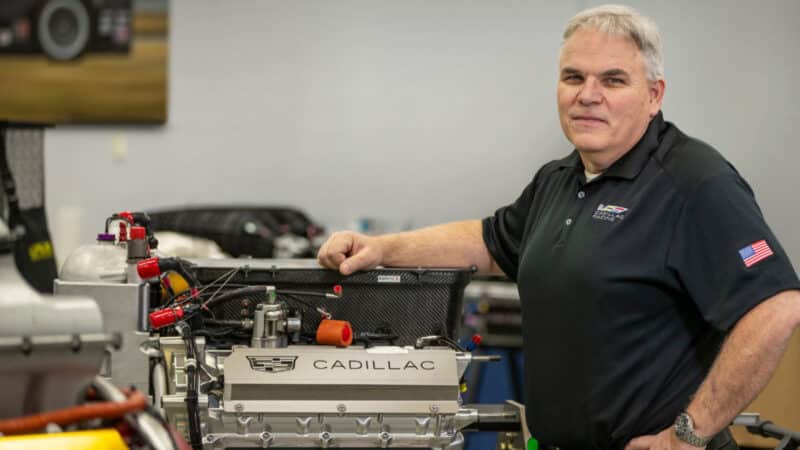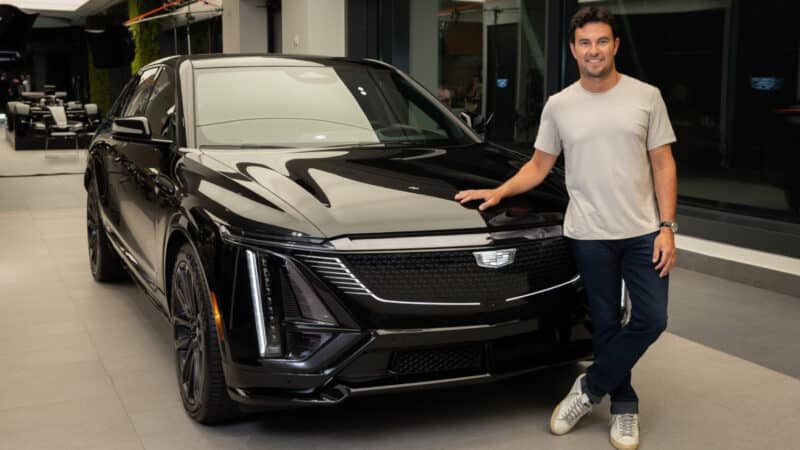When the 2026 Formula 1 season kicks off, it will not only have a radical new set of regulations, but also two new cars on the grid as Cadillac becomes the series’ 11th team.
It took a few attempts to get the green light, but the American manufacturer finally secured the spot in March 2025, leaving it with around a year to be ready for its first F1 race.
Cadillac’s arrival represents both an expansion of F1’s American footprint and an ambitious long-term plan to join the select group of full works outfits that build both chassis and engines.
The team was formed through a partnership between General Motors and TWG Motorsports, and will combine American engineering with European racing expertise.
TWG Motorsports has extensive racing experience, and owns or operates organisations like Andretti Global, Spire Motorsports and Wayne Taylor Racing.
Although it only got approved earlier in 2025, Cadillac’s entry has been years in the making.
Cadillac’s entry means Formula 1 will have 11 teams on the grid for the first time since 2016.
The timing of Cadillac’s arrival is no coincidence; Formula 1’s technical regulations undergo a major reset in 2026, with a focus on simplified aerodynamics and more sustainable hybrid power units.
Starting from scratch at the same moment as everyone else in theory offers Cadillac the chance to close some of the gap to established rivals, even though the challenge it faces is still huge, and time is not on its side.
The winding road to an F1 entry
The road to Cadillac’s entry has been anything but straightforward.
For years, Michael Andretti’s Andretti Global organisation lobbied to join Formula 1, submitting a bid to the FIA’s tender process in 2022 and later announcing a partnership with General Motors under the Cadillac brand.
Cadillac is making the field grow to 22 cars
Cadillac
While the FIA gave a green light, Formula One Management (FOM) was reluctant. Liberty Media and F1’s commercial rights holders argued that Andretti’s plan did not bring enough added value to justify expanding the grid from 10 to 11 teams.
Concerns over infrastructure, marketability, and the financial impact on existing outfits meant that Andretti’s bid was rejected in early 2024, despite strong political support in the United States.
The decision sparked a transatlantic war of words: American politicians, including members of Congress, accused F1 of shutting out a US entrant for commercial reasons, while F1 insisted the bid lacked the depth required for long-term competitiveness.
That setback could have been the end of the story, but General Motors doubled down on its interest, shifting the project away from Andretti’s structure and into a new partnership with TWG Global.
By late 2024, Cadillac returned to the negotiating table with a more robust business case: greater financial backing, confirmed factory bases in the US and the UK, and a long-term commitment to building its own engines.
With Andretti out of the picture, this time the pitch landed. In November 2024, F1 agreed in principle to Cadillac’s entry, and in March 2025, the deal was formally approved.
The rebuffed Andretti bid had highlighted the hurdles new teams face – but Cadillac’s eventual success showed that with heavyweight manufacturer support and a credible plan, the door to F1 could still be prised open.
Technical foundations
After gaining an entry, Cadillac’s next challenge was to stand up the infrastructure needed to design, build, and operate a Formula 1 team from scratch.
Rather than relying on a single headquarters, the project has spread its footprint across both sides of the Atlantic: Engineering and operations are based in Fishers, Indiana, with additional facilities in Charlotte, North Carolina and GM’s long-established base in Warren, Michigan.
A hub in Silverstone places Cadillac within easy reach of the F1 supply chain and technical talent pool.
Russ O’Blenes will lead Cadillac’s power units venture
Cadillac
While the long-term plan is for GM to produce its own power unit, Cadillac will not immediately run as a full works operation.
While GM develops its own engine through the newly formed GM Performance Power Units LLC, the team will begin life as a Ferrari customer.
That partnership will see Cadillac use Ferrari’s engines and gearboxes for its first seasons, a factor that should ease the American squad’s pressure as it learns the ropes.
The arrangement mirrors the path taken by F1’s other American team, Haas, which has been using Ferrari engines since it joined the grid in 2016.
It will mean balancing the short-term goal of getting a reliable, raceable car on the grid in 2026 with the longer-term ambition of becoming a fully independent American works team, joining the likes of Mercedes or Ferrari.
Leadership and structure
The team’s organisational chart blends familiar motor sport expertise with fresh investment.
TWG Motorsports CEO Dan Towriss heads the project on the ownership side, while former Marussia chief Graeme Lowdon serves as team principal.
Former Renault technical director Nick Chester is serving as Cadillac’s chief technical officer.
Chester is not the only ex-Team Enstone member who has joined Cadillac’s new programme, with operations officer Rob White and aerodynamicist Jon Tomlinson also in its roster.
Lowdon arrived at Cadillac with plenty of F1 experience
Grand Prix Photo
Pat Symonds, the former F1 chief technical officer, serves as an executive engineering consultant.
The team has also hired former Miami Grand Prix president Tyler Epp as its head of commercial strategy to lead its commercial operations.
Epp, who oversaw the Miami event from the start, was described by team leadership as a “visionary” for the new role.
On the power unit front, GM has created GM Performance Power Units LLC, led by veteran engineer Russ O’Blenes, to develop Cadillac’s own engine.
The company aims to field a home-grown power unit before the end of the decade.
The first driver pairing
For its first season, Cadillac has opted for proven hands rather than untested drivers, even if that means ruling out an American racer.
The team will line up with Sergio Pérez and Valtteri Bottas, two veterans with more than 450 grand prix starts between them, but who were without a racing seat during 2025.
Still, both bring deep knowledge of F1 machinery and experience in developing cars, two key factors in helping guide a new entrant through its formative years.
Lowdon labelled Cadillac’s driver pairing “a bold signal of intent”.
Pérez represents a a major marketing asset for Cadillac
Cadillac
“They’ve seen it all and they know what it takes to succeed in Formula 1,” he added. “But more importantly, they understand what it means to help build a team. Their leadership, feedback, race-hardened instincts and of course their speed will be invaluable as we bring this team to life.”




